Nothing can prepare you for FaceTiming Pamela Anderson. One second there is only you – staring, through a layer of iPhone glass, at your tired, trapped reflection, both of you hoping that is not how you actually look – and the next second there is Pamela Anderson, brightening the screen instantaneously and completely, the way a ray of sun stretching beyond a cloud can seem to bounce off the whole Pacific.
She is striding across the great outdoors, and she is smiling and she is saying hello but singing it “Heh-LOOOW!” like she is delighted and excited to talk to you. As if you were not bothering her. But it can’t have been Anderson’s – Pamela’s? Pam’s? “Anytime anyone calls me Pam, I feel like they’re mad at me. But anything is fine!” – dream of dreams to drop everything in the middle of her day to answer nosy questions for more than an hour.
She has a six-acre pocket of a Canadian island to run. She has shrubs to select based on criteria of prickliness (for privacy) and beauty (for overall visual harmony). She has formal letters to write to the men and women – mostly men – who hold their nations’ nuclear codes, about subjects close to her heart. She has got Anaïs Nin to reread, and Russian to study, and a cam site to unveil.
Pamela Anderson is preparing for the refurbished debut of Jasmin, a not necessarily sexually explicit webcam, or camming, site which offers live online broadcasts and prerecorded content
The last of these tasks, on a recent Friday afternoon, grants the intrusion into Anderson’s peaceful, insular existence. She is preparing for the refurbished debut of Jasmin, a not necessarily sexually explicit webcam, or “camming”, site, which offers live online broadcasts and prerecorded content, and has been envisioned as a tamer offshoot of LiveJasmin, one of the most popular, nearly always sexually explicit cam sites on the web.
Jasmin had hired Anderson in 2019 as its spokeswoman and creative director, pledging in a subsequent news release that she would appear daily there, and to connect “users with lifestyle, relationship and sex positivity influencers”. Briskly strolling the grounds of her property on Vancouver Island, in British Columbia, Anderson, who is an effervescent 52, casts an impression of a woman who doesn’t take herself too seriously, except in the way dreamy people tend to treat everything in the universe with equal seriousness.
She speaks a mile a minute about her rustic life and the “misunderstood market” that is camming, her voice for the most part perky and girlish, except for occasional plummets into deadpan. After describing a fairy-tale existence with various cute marine mammals forever frolicking on and around her small wooden dock, she adds, with faux causticness, that the seals “look like big Rottweilers swimming around”. After declaring optimistically, “I think I have a lot to say that might be interesting to people,” she does an abrupt volte-face, switching to a low, confessional timbre: “Who knows? Who knows, right, what I’m doing? I don’t know. Maybe no one will be interested.”
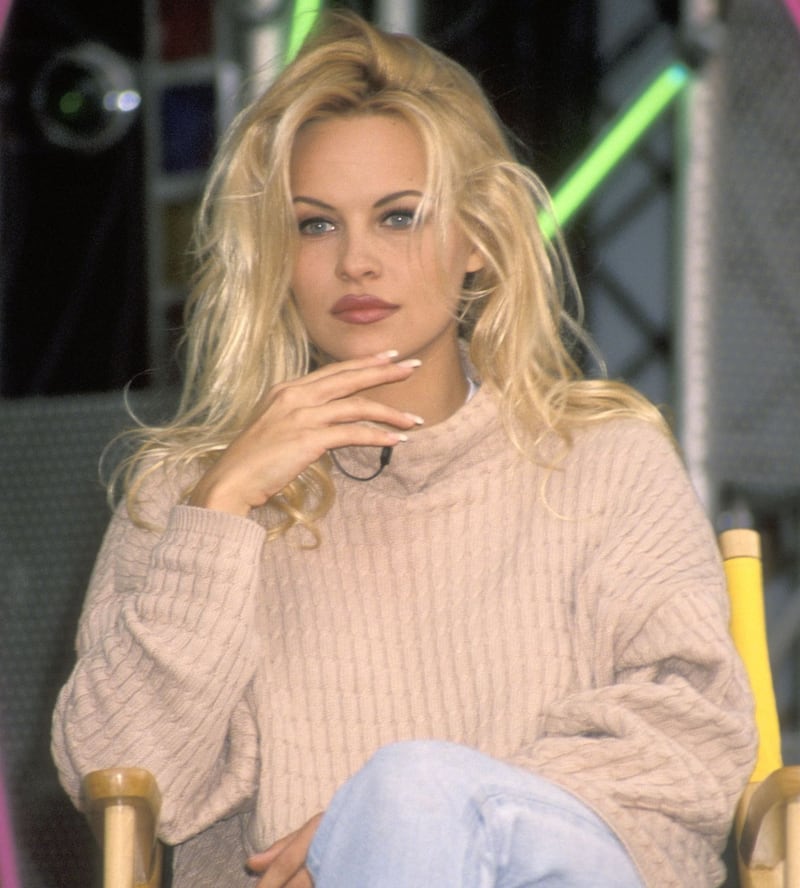
The property belonged to her paternal grandmother, Marjorie, who used to run a small general store out of one of the buildings on site. Anderson bought it from her decades ago so that, she says, her grandmother could have the market value in cash to distribute to her children, and the land could stay in the family. It’s on the water, in the same small town in British Columbia where Anderson grew up; she moved back in July, after spending a couple of years in the South of France.
“There used to be nine cabins here,” Anderson says, pausing for breath between sentence bursts as she roams. “My mom and dad probably conceived me here. They lived in Cabin 9. And they got married on the property.” “See these little bedrooms?” she asks, showing off cosy A-frame accommodations. Anderson explains, in detail, where everyone in her father’s family used to sleep. “They’re so cute! Tiny.” One of the small white bedrooms is where she sleeps now.
“At my window, I have a woodpecker who’s burrowed a little nest. He wakes me up every morning, banging his head against the wall.” She switches to a singsong voice, singing her next words up the scale: “They’re! So! Loud!” “What else is here?” she asks herself. By her own admission, Anderson “kind of abandoned” the property for 20 years after her grandmother’s death. “It was really dilapidated,” she says. Some of the crews she had hired to fix it up called it “the haunted house”. Some people (including her parents, who live nearby) believe it is haunted.
“Oh, they have stories, like there’s dead bodies. And everyone has nicknames, the people that lived on here.” (“Here’s Acid Eddie’s house,” she will say later, while crossing in front of a small cabin.) “Someone buried gold on the property. I’m like, ‘Really?’” she scoffs. Years ago Anderson and an investment partner filed documents to build a collection of condominiums and town houses on the property, but the development plans fizzled. On the phone, Anderson says she has “no plans to make it a business. I just want to live here.”
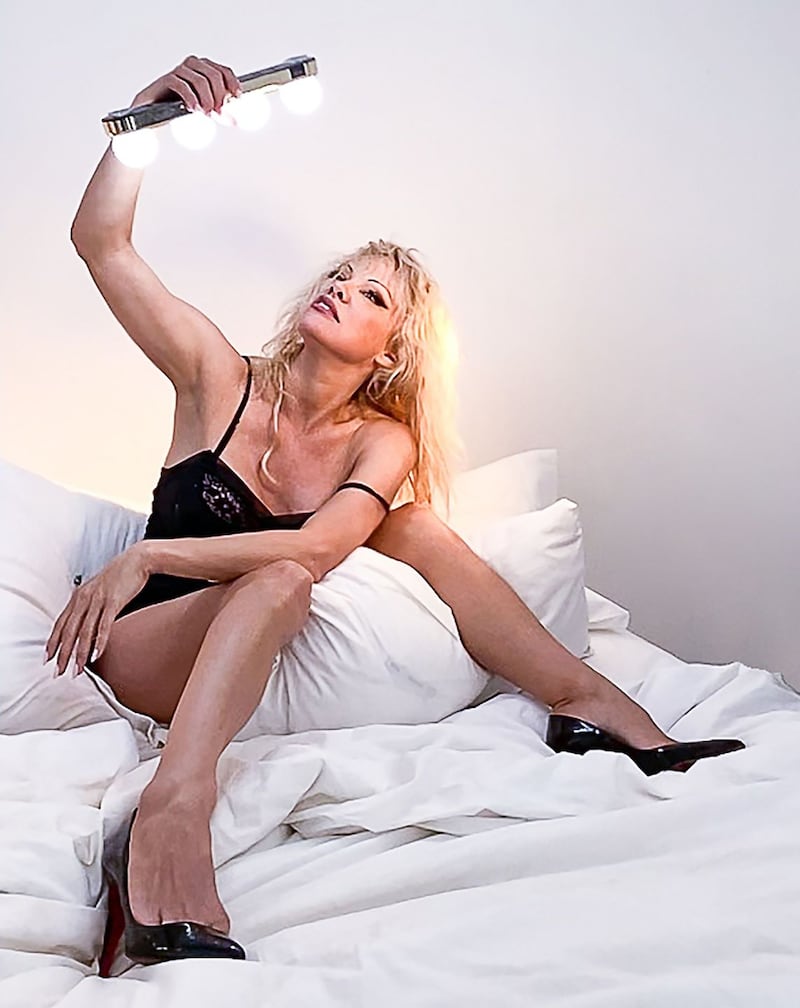
“It’s for family. Or for, if I had a photo shoot here, I could put the whole crew here.” In addition to the main house, Anderson envisions a greenhouse, a utility building, a couple of cabins and a vegetable garden whose bounty she will can. (“With my mother!”) Her flower garden will be the colours of late dusk: blues, purples and pinks. “I don’t like oranges or reds, so I’m staying away from that,” she says. She knows her plant names: bleeding hearts, trilliums, Hicks yew hedge. She knows the exact number of shocking pink Yves Piaget rose bushes she will require: 62, already ordered.
“When I ever had problems at any time in my life, I would come here and dream really vividly,” Anderson says. “When I go into the middle of my field, with all the trees surrounding me... it’s just like they’ve known me my whole life.” The weather in British Columbia keeps her calm, she says, although “I don’t really dress for the cold”. In sunny Los Angeles, whose beaches Anderson found fame patrolling on the television series Baywatch, “I think I have more of a nervous kind of energy, or I’m hyper.”
ANDERSON WAS FAMOUSLY "DISCOVERED" in 1989, when a cameraman at the Canadian football game she was attending (clad in a crop top that advertised the Labatt brewing company) broadcast her image on the stadium's jumbo video screens. Her life as a highly visible public figure began in earnest when she was featured as the centrefold in the February 1990 issue of Playboy. The acting career followed, as did much more Playboy. She has been so recognisable for so long that members of her species have grown comfortable interacting with her more as a novelty than a fellow person – an "it", in the sense of a stranger walking up to her and declaring, "I heard you were here, and I had to come see it!"
Describing a common scenario, Anderson says, laughing: "My hair's all scraggly, all over the place. I'm wearing a sarong and, you know, fake Ugg boots. It's not a pretty look. Yeah, I feel like 'it!'" But in her hometown, where there are some 8,500 residents, she says, her presence causes little commotion. Recently, an old man (wearing a mask) biked up to her in a parking lot and asked how Julian Assange was doing. Anderson's years of highly photographed visits to see Assange, the WikiLeaks founder, in the Ecuadorean embassy in London, where he evaded extradition for seven years, and in the London prison where he is currently held, prompted much speculation about the nature of their relationship. Thus she successfully drew public attention to what she viewed as a conspiracy to quell press freedoms.
Speaking with Anderson, as a reporter, is soothing in aggregate and maddening in specific. Her conversation is a bountiful natural resource that endlessly regenerates itself. It would seem well suited to a webcam venture – consider the shy voyeurs who seek to have engaging interactions with a woman but are perpetually unsure of what to say next.
But paths of conversation taken with Anderson quickly, immutably and somewhat bemusingly conclude in one of three areas: her activism, her conviction that people must question everything they hear and read, or her general philosophy of c’est la vie.
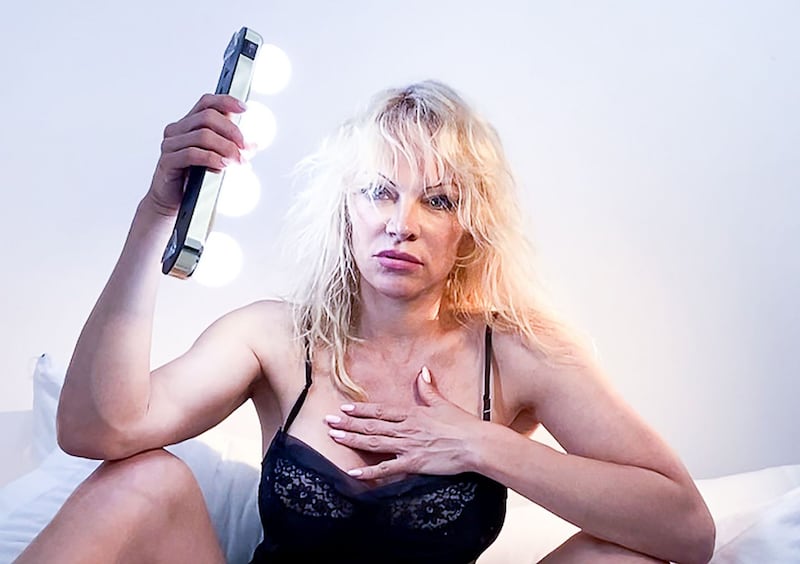
This is not to suggest Anderson is a lazy conversationalist. On the contrary, it takes an active, determined thinker to constantly find new routes back to the same three topics (four if you count Jasmin). And they are worthy topics. But there are others.
Anyway, several things are clear. Anderson is an impassioned advocate for animals, for the larger ecosystem of Earth and for those who “question authority”. “People have to educate themselves and not get into a place where they’re so stressed out that they’ll do anything that they’re told,” she says. Anyone mistaking Anderson for a good-time gal would do well to peruse her personal website, where, under the opaque label “Journaling”, lies an archive of her meticulously formatted open letters written to public figures, on the subject of Assange and other topics.
A letter to “His Excellency President Vladimir Putin” (regarding “the designation of marine protected areas in the East Antarctic, the Weddell Sea and the Antarctic Peninsula”) dutifully includes the postal address of the Russian presidential executive office (“23 Ulitsa Ilyinka, 103132, Moscow”).
"Dear Messrs Kenney and Dreeshen", reads the salutation on a missive addressed to Alberta's premier and its minister of agriculture and forestry (urging them to direct the Calgary Stampede, a rodeo, to ban chuck-wagon horse races.) A letter to the president of France, Emmanuel Macron (regarding the living conditions of French circus animals), informs the recipient of a possible violation of "la loi française (l'article L214-1 du Code rural)."
She has also written to President Donald Trump. On November 8th, 2019, a week after the United Nations special rapporteur on torture reported that Assange's life was at risk in prison, and nearly a year to the day after she referred to Trump on Twitter as a "narcissist perv" and "completely selfish idiotic fool who must work for the devil", Anderson wrote a letter to the president and first lady in which she appeared to be reaching for things to compliment.
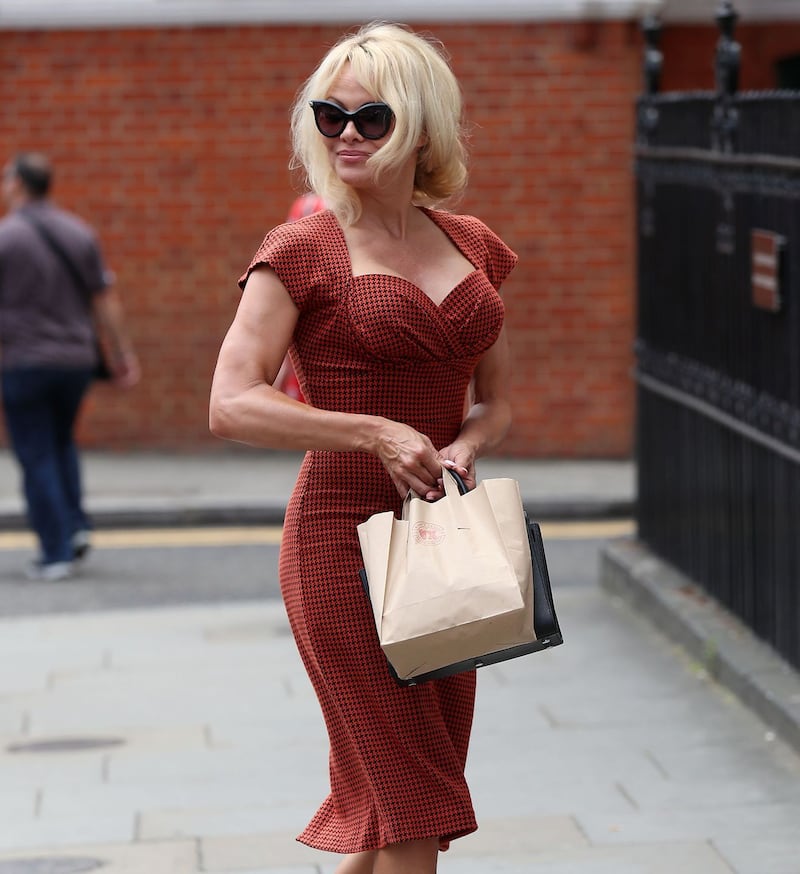
After remarking that his “emotional” style “strikes a chord with people”, she implored him to champion the free press by pardoning Assange. “To save Democracy would be your defining moment stamped in the pages of history and will turn your presidency around.”
"It's not being fake or manipulative," Anderson says on the phone, of the discrepancy. "I just... Is there anything positive we can say? Because that's what makes change, if we can find positive things and focus on positive things."
Despite Anderson’s coaxing, Trump did not issue the pardon. With Assange in prison, Anderson says, “there’s nothing more I can do. And he even said to me, ‘Pamela, I’d rather you just keep living your life and being you. And that’s how you help me. Don’t put yourself in any awkward positions because of your love for me.’” (Anderson characterises their relationship as a friendship.)
RIGHT NOW, AMID THE PANDEMIC, one of Anderson's primary concerns is the news – specifically, that her parents are watching too many American news programmes. "They can sit in front of CNN, and they just devour that and MSNBC. And I said, 'If you're watching that, maybe you should watch RT" – the state-backed Russian news network – "as well, because somewhere in the middle is the truth. Or Al-Jazeera or BBC. Get a lot of different things going if you like to watch news."
Anderson herself was recently the subject of some entertainment-news headlines for what was described as a secret marriage to Jon Peters, a movie producer and her friend of more than 30 years, that ended after 12 days, before the paperwork for a marriage certificate had been filed.
“I wasn’t married,” Anderson says when the subject is broached. “No,” she said, sounding, for the first time in conversation, rather sad. “I’m a romantic. I think I’m an easy target. And I think people just live in fear. I don’t know what all that was about, but I think fear really played a lot into it. It was just kind of a little moment,” she says. “A moment that came and went, but there was no wedding; there was no marriage; there was no anything. It’s like it never even happened. That sounds bizarre.” She laughs. “But that’s it.”
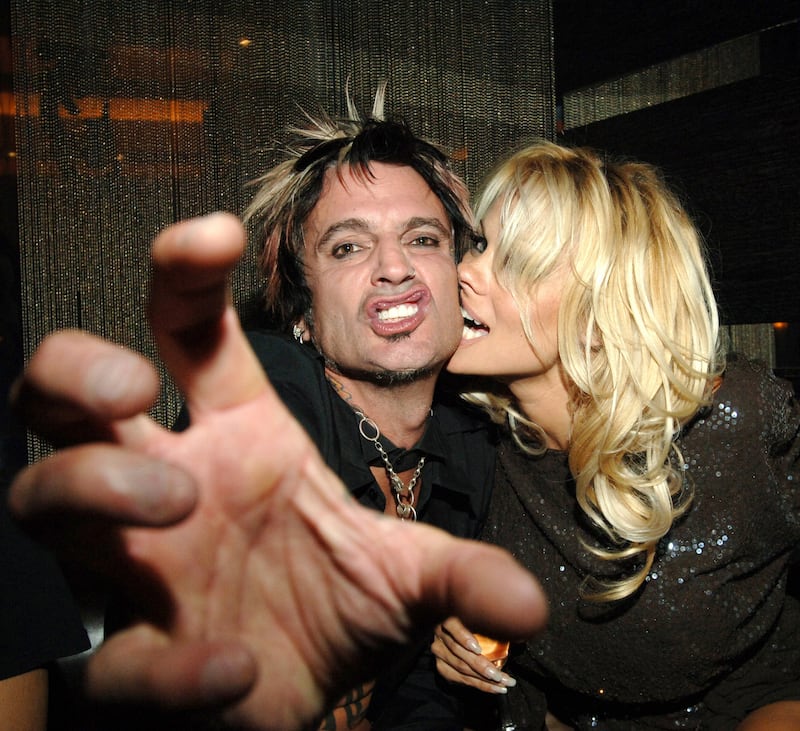
How did she get to that moment? "I was in India, and I went to this panchakarma cleanse, and I'd been gone for three weeks in this ayurvedic center, meditating, just so clear. I came back and, vwoom, within 24 hours I saw Jon. It was like this little whirlwind thing, and it was over really quick, and it was nothing. Nothing physical. It's just a friendship.
“We’re all wounded people,” she says. “And I’m a big believer in fate, destiny, all those crazy things. So I just... There’s something about knowing somebody for so long and thinking, Oh! It’s... no hearts were broken. I don’t know what his intentions were. And it’s almost like I don’t even want to think about it too much because it’d be probably too hurtful.”
The New York Post reported that, after the nonmarriage ended, Peters sent an email to Page Six, its gossip column, in which he claimed to have paid $200,000 worth of bills for Anderson. He subsequently denied making the claim in an interview with Anderson’s hometown newspaper, the Ladysmith Chemainus Chronicle. (“I don’t need anyone to pay my bills,” Anderson told the Chronicle.)
“Thank God it happened the way it happened, and I’m here and I’m happy,” she says, of the not-quite-marriage, and adds in the same breath, “I’ve only been married – I’ve been married three times. People think I’ve been married five times. I don’t know why. I’ve been married three times. I’ve been married to Tommy” (Lee, of the band Mötley Crüe, and her adult sons’ father); “I’ve been married to Bob” (Ritchie, better known as Kid Rock); “and to Rick” (Salomon). “And that is it. Three marriages. I know that’s a lot,” she says, and giggles, “but it’s less than five.”
Could she see herself getting married again? “Absolutely! Just one more time. Just one more time, please, God. One more time only. Only!”
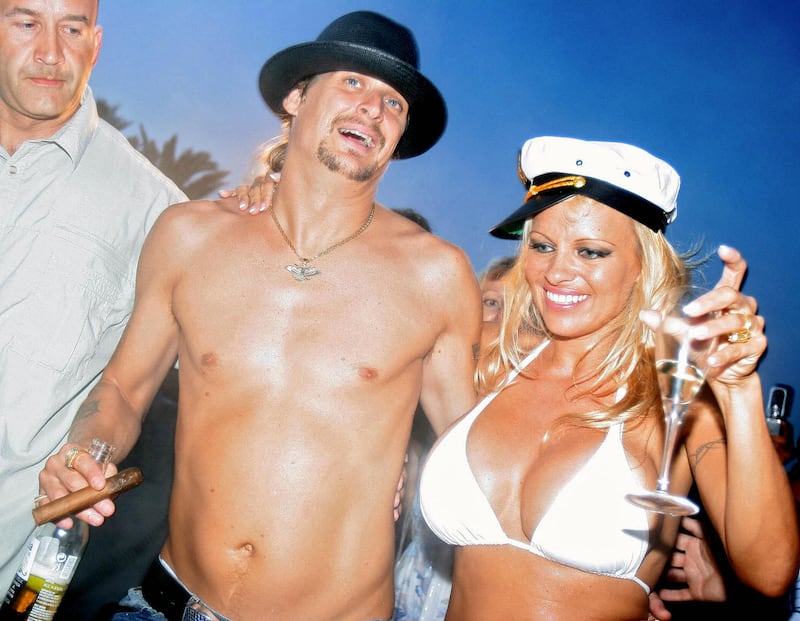
ON JASMIN, INFLUENCERS set a rate (between $1.99 and $14.99 per minute), which users pay to interact with them over text, video chat or direct message. The company says influencers are paid according to a "sliding-scale percentage revenue share style model", taking home between 30 and 60 per cent of the income, and that percentages are determined by how frequently an influencer engages with users.
Anderson presents the venture as an opportunity to establish emotional connections and combat loneliness. “Sometimes it’s easier to talk to a stranger than a friend or parents,” she says. “We need to communicate. Humans need humans.” Some people, she knows, will see paying to interact as an imitation of intimacy, instead of fostering the real thing. “I think people tend to always want it to be like it used to be – romanticise the past,” she says. “We need to romanticise the future. And romanticise where we are now. Maybe there’s a way to complement our relationships by using some of these platforms. They say, ‘Pamela revealed,’” she says, referring to a label on her Jasmin page, “because I’ve never really shown this kind of side to me.”
Yet the content under that heading would seem to showcase the side of Anderson with which the public is familiar: it consists of two gauzy black-and-white video shorts in which Anderson, corset clad, plays dress-up with pearls and has a photo shoot. It could perhaps be deemed revealing – certainly flesh is on display – but there’s not much in the way of new specifics.
This is emblematic of the conundrum Anderson, a self-proclaimed “open book”, presents in conversation, which is not so much an impasse as an impenetrable fog of “romanticism”, a concept she makes references to frequently but vaguely. It seems roughly intended to denote aspirations and pursuits that are noble, important and free of chemical preservatives.
When asked if she has any practical advice she thinks may be useful to someone under coronavirus lockdown, Anderson says, “Hmm”, and then, “Just, you know, live your dream.” At the suggestion that “Live your dream” is not highly practical advice, she stands her ground. “I think that is practical advice, because it’s a choice. It’s just another way of looking at things.” And then the FaceTime ends. – New York Times











